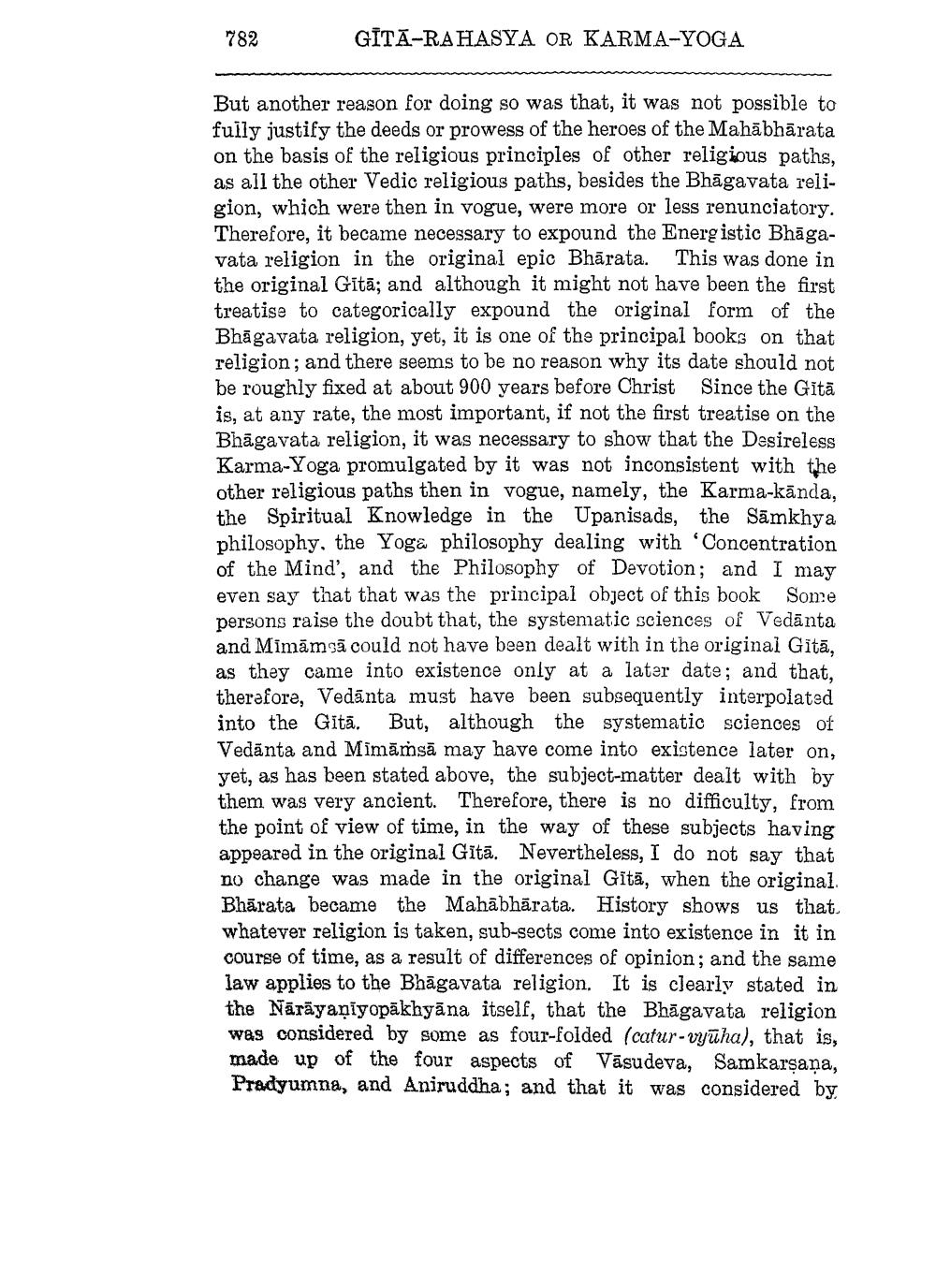________________
1782
GITĀ-RAHASYA OR KARMA-YOGA
But another reason for doing so was that, it was not possible to fully justify the deeds or prowess of the heroes of the Mahābhārata on the basis of the religious principles of other religious paths, as all the other Vedic religious paths, besides the Bhāgavata religion, which were then in vogue, were more or less renunciatory. Therefore, it became necessary to expound the Energistic Bhāgavata religion in the original epic Bhārata. This was done in the original Gītā; and although it might not have been the first treatise to categorically expound the original form of the Bhāgavata religion, yet, it is one of the principal books on that religion; and there seems to be no reason why its date should not be roughly fixed at about 900 years before Christ Since the Gītā is, at any rate, the most important, if not the first treatise on the Bhāgavata religion, it was necessary to show that the Desireless Karma-Yoga promulgated by it was not inconsistent with the other religious paths then in vogue, namely, the Karma-kānda, the Spiritual Knowledge in the Upanisads, the Sāmkhya philosophy, the Yoga philosophy dealing with 'Concentration of the Mind', and the Philosophy of Devotion; and I may even say that that was the principal object of this book Some persons raise the doubt that, the systematic sciences of Vedānta and Mimāmsã could not have been dealt with in the original Gītā, as they came into existence only at a later date; and that, therefore, Vedānta must have been subsequently interpolated into the Gitā. But, although the systematic sciences of Vedānta and Mīmāṁsā may have come into existence later on, yet, as has been stated above, the subject-matter dealt with by them was very ancient. Therefore, there is no difficulty, from the point of view of time, in the way of these subjects having appeared in the original Gitā. Nevertheless, I do not say that no change was made in the original Gitä, when the original. Bhārata became the Mahābhārata. History shows us that. whatever religion is taken, sub-sects come into existence in it in course of time, as a result of differences of opinion; and the same law applies to the Bhāgavata religion. It is clearly stated in the Nāräyaniyopākhyāna itself, that the Bhāgavata religion was considered by some as four-folded (catur-vyuha), that is, made up of the four aspects of Vasudeva, Samkarsana, Pradyumna, and Aniruddha; and that it was considered by




